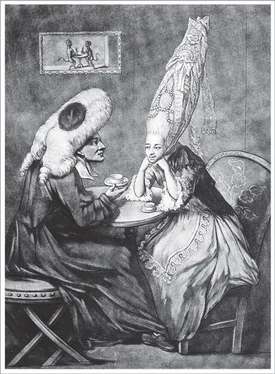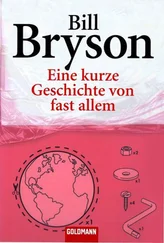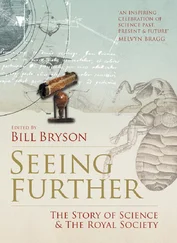Bill Bryson - At Home
Здесь есть возможность читать онлайн «Bill Bryson - At Home» весь текст электронной книги совершенно бесплатно (целиком полную версию без сокращений). В некоторых случаях можно слушать аудио, скачать через торрент в формате fb2 и присутствует краткое содержание. Жанр: Старинная литература, на английском языке. Описание произведения, (предисловие) а так же отзывы посетителей доступны на портале библиотеки ЛибКат.
- Название:At Home
- Автор:
- Жанр:
- Год:неизвестен
- ISBN:нет данных
- Рейтинг книги:4 / 5. Голосов: 1
-
Избранное:Добавить в избранное
- Отзывы:
-
Ваша оценка:
- 80
- 1
- 2
- 3
- 4
- 5
At Home: краткое содержание, описание и аннотация
Предлагаем к чтению аннотацию, описание, краткое содержание или предисловие (зависит от того, что написал сам автор книги «At Home»). Если вы не нашли необходимую информацию о книге — напишите в комментариях, мы постараемся отыскать её.
At Home — читать онлайн бесплатно полную книгу (весь текст) целиком
Ниже представлен текст книги, разбитый по страницам. Система сохранения места последней прочитанной страницы, позволяет с удобством читать онлайн бесплатно книгу «At Home», без необходимости каждый раз заново искать на чём Вы остановились. Поставьте закладку, и сможете в любой момент перейти на страницу, на которой закончили чтение.
Интервал:
Закладка:
When not helping people lose consciousness before surgery, Snow spent a great deal of time trying to understand where diseases came from. He particularly wondered why cholera devastated some neighborhoods while sparing others. In Southwark, the rate of cholera deaths was six times higher than in next-door Lambeth. If cholera was caused by bad airs, then why would people in contiguous boroughs, breathing the same air, have such discrepant rates of infection? Besides, if cholera was spread by smell, then those who dealt most directly with bad odors—toshers, flushermen, nightsoil handlers, and others whose livelihood was human waste—ought to be the most frequent victims. But they weren’t. After the 1848 outbreak, Snow couldn’t find a single flusherman who had died of cholera.
Snow’s lasting achievement was not just to understand the cause of cholera but also to collect the evidence in a scientifically rigorous manner. He made the most careful maps showing the exact distributions of where cholera victims lived. These made intriguing patterns. For instance, Bethlehem Hospital, the famous lunatic asylum, had not a single victim, while people on facing streets in every direction were felled in alarming numbers. The difference was that the hospital had its own water supply, from a well on the grounds, while people outside took their water from public wells. In the same way, the people of Lambeth drank water that was piped in from clean sources outside the city, whereas those in neighboring Southwark took their water directly from the polluted Thames.
Snow announced his findings in a pamphlet of 1849, On the Mode of Communication of Cholera , which demonstrated a clear link between cholera and water contaminated with human feces. It is one of the most important documents in the history of statistics, public health, medicine, demographics, forensic science—one of the most important documents, in short, of the nineteenth century. No one listened, and the epidemics kept coming.
In 1854, a particularly virulent outbreak hit Soho. In a single small neighborhood around Broad Street, more than five hundred people died in ten days, making it, as Snow noted, probably the most devastating occurrence of sudden mortality in history, worse even than the great plague. The toll would have been much higher except that so many people fled the district.
The patterns of deaths presented some puzzling anomalies. One of the victims died in Hampstead and another in Islington—both miles away. Snow hiked out to where the outlying victims lived and interviewed relatives and neighbors. It turned out that the Hampstead victim was a fan of Broad Street water—she liked it so much that she had it delivered regularly to her house—and had taken a draft shortly before becoming ill. The Islington victim was her niece, who had come to visit and had drunk some water, too.
Snow managed to persuade the parish council to remove the handle from a water pump on Broad Street, after which cholera deaths in the neighborhood vanished—or so it is commonly reported. In fact, the epidemic was already subsiding by the time the handle was removed, largely because so many people had fled, thinking the very air was poisonous.
Despite the accumulated evidence, Snow’s conclusions were still rejected. When Snow appeared before a parliamentary select committee, the chairman, Sir Benjamin Hall, found it impossible to credit his findings. In a dumbfounded tone, Hall asked Snow: “Are the Committee to understand, taking the case of bone-boilers, that no matter how offensive to the sense of smell of effluvia that comes from the bone-boiling establishments may be, yet you consider that it is not prejudicial in any way to the health of the inhabitants of the district?”
“That is my opinion,” replied Snow, but unfortunately his manner, always diffident, was less forthright than his conclusions, and authorities continued to reject them.
It is hard now to appreciate just how controversial and unwelcome Snow’s views were. Many authorities actively detested him for them. The Lancet concluded that he was in the pocket of business interests which wished to continue to fill the air with “pestilent vapors, miasms and loathsome abominations of every kind,” and make themselves rich by poisoning their neighbors. “After careful enquiry,” the parliamentary inquiry concluded, “we see no reason to adopt this belief.”
Finally, the inevitable happened. In the summer of 1858, London suffered a heat wave combined with a drought in which waste accumulated but didn’t get washed away. Temperatures soared into the nineties and stayed there—an unusual condition for London. The result was “the Great Stink,” as the Times dubbed it. The Thames grew so noxious that almost no one could bear to be near it. “Whoso once inhales the stink can never forget it,” wrote one newspaper. The drapes of the new Houses of Parliament were drawn tight and doused in a solution of chloride of lime to mitigate the lethal smells, but the result was something like panic. Parliament had to be suspended. Some members, according to Stephen Halliday in The Great Stink of London , tried to venture into the library, overlooking the river, “but they were instantaneously driven to retreat, each man with a handkerchief to his nose.”
Snow never got to see this or any of his ideas vindicated. He died suddenly of a stroke in the midst of the Great Stink, not knowing that one day he would be considered a hero. He was just forty-five years old. At the time, his death was hardly noted.
Happily, another heroic figure was about to stride onto the scene—Joseph Bazalgette. By chance, Bazalgette worked in offices around the corner from Snow, though the two men never met as far as is known. Bazalgette was a very small man, short and featherlight, but compensated for his jockeylike stature with a spectacular curling mustache that reached literally from ear to ear. Like that other great Victorian engineer Isambard Kingdom Brunel, Bazalgette’s antecedents were French, though the family had been settled in England for thirty-five years by the time Joseph was born in 1819. His father was a Royal Naval commander, and Bazalgette grew up in an atmosphere of privilege, educated by private tutors and given every advantage in life.
Disqualified from a military career by his elfin stature, he trained as a railway engineer, but in 1849, aged thirty, he joined the Metropolitan Commission of Sewers, where he soon rose to the position of chief engineer. Sanitation has never had a greater champion. Nothing concerning sewage and waste disposal escaped his scrutiny. Troubled that there were almost no public lavatories in London, he devised a plan to place public toilets at critical spots throughout the city. By collecting urine and selling it as an industrial product (stale urine was vital to the processing of alum, for one thing), he calculated that each urinal could produce £48 of income a year, a very handsome return. That plan was never adopted, but it did instill the general conviction that where sewers were concerned Joseph Bazalgette was the man to turn to.
After the Great Stink it became clear that London’s sewage system needed to be rebuilt, and Bazalgette was handed the job. The challenge was formidable. Bazalgette had to insert into an immensely busy city some twelve hundred miles of tunnels, which would last indefinitely, carry away every particle of waste generated by three million people, and be able to handle future growth of unknowable dimensions. He would have to acquire land, negotiate rights of way, procure and distribute materials, and direct hordes of laborers. The scale of every aspect of the job was exhausting merely to contemplate. The tunnels required 318 million bricks and necessitated the digging up and redistributing of 3.5 million cubic yards of earth. All this was to be done on a budget of just £3 million.
Читать дальшеИнтервал:
Закладка:
Похожие книги на «At Home»
Представляем Вашему вниманию похожие книги на «At Home» списком для выбора. Мы отобрали схожую по названию и смыслу литературу в надежде предоставить читателям больше вариантов отыскать новые, интересные, ещё непрочитанные произведения.
Обсуждение, отзывы о книге «At Home» и просто собственные мнения читателей. Оставьте ваши комментарии, напишите, что Вы думаете о произведении, его смысле или главных героях. Укажите что конкретно понравилось, а что нет, и почему Вы так считаете.












